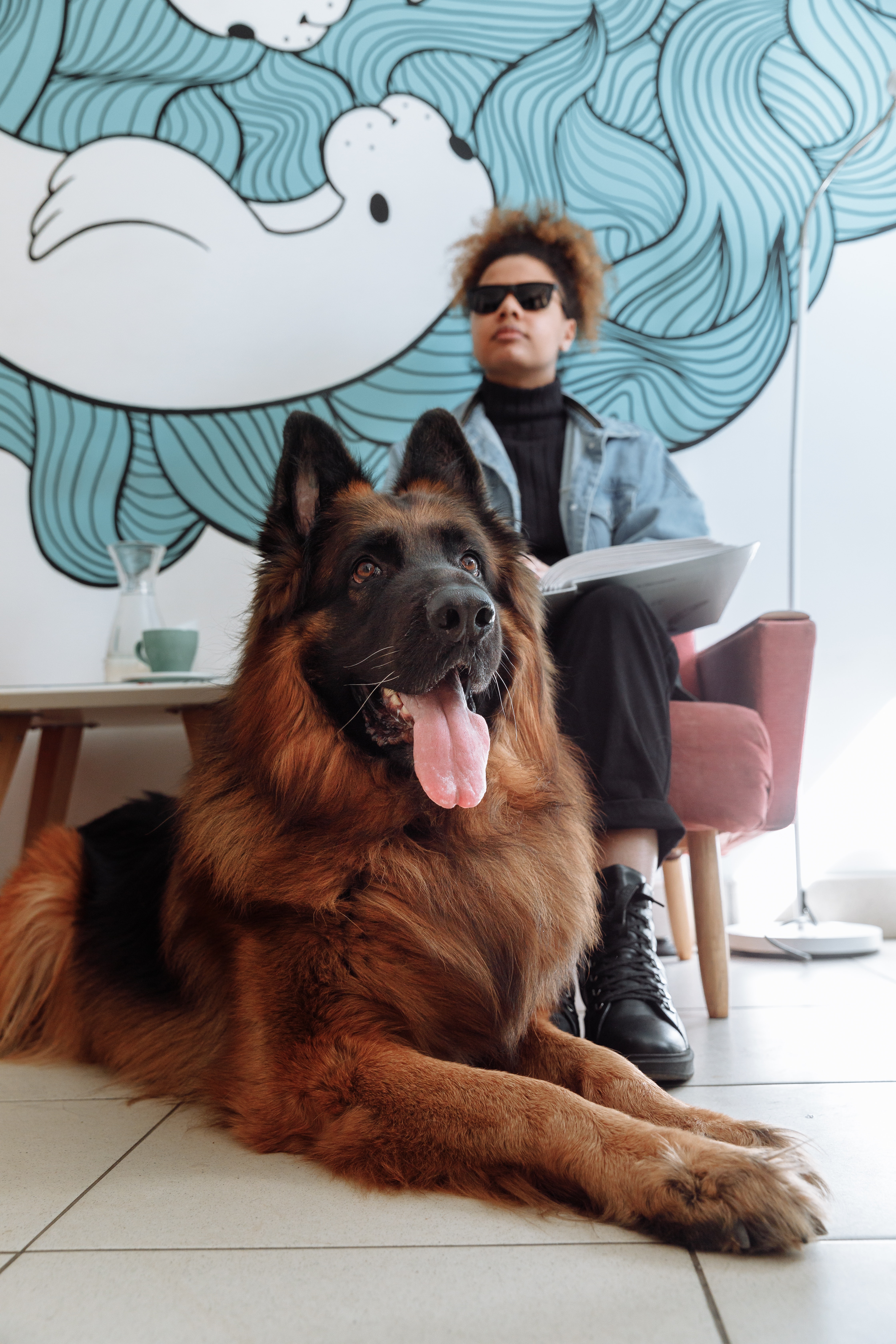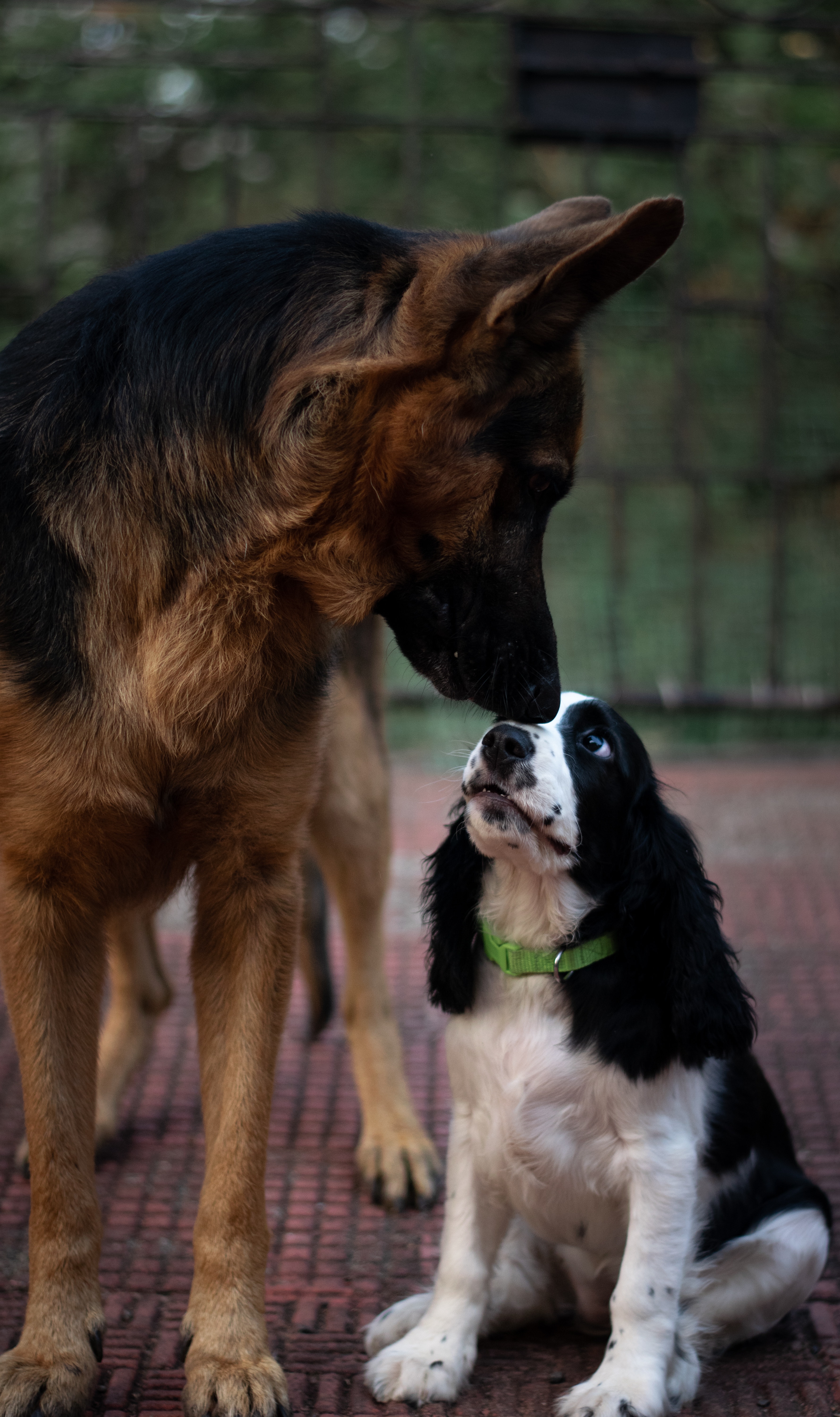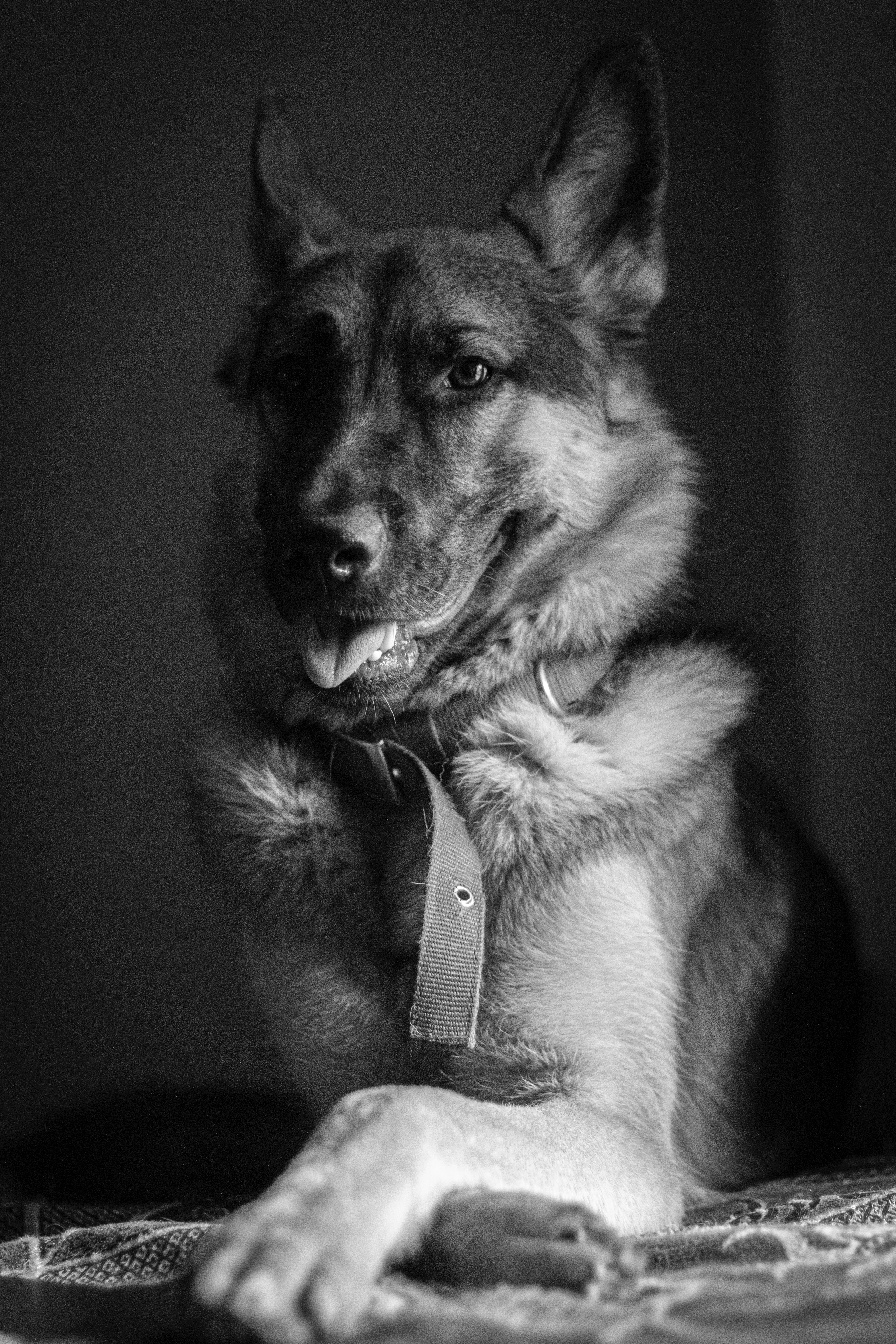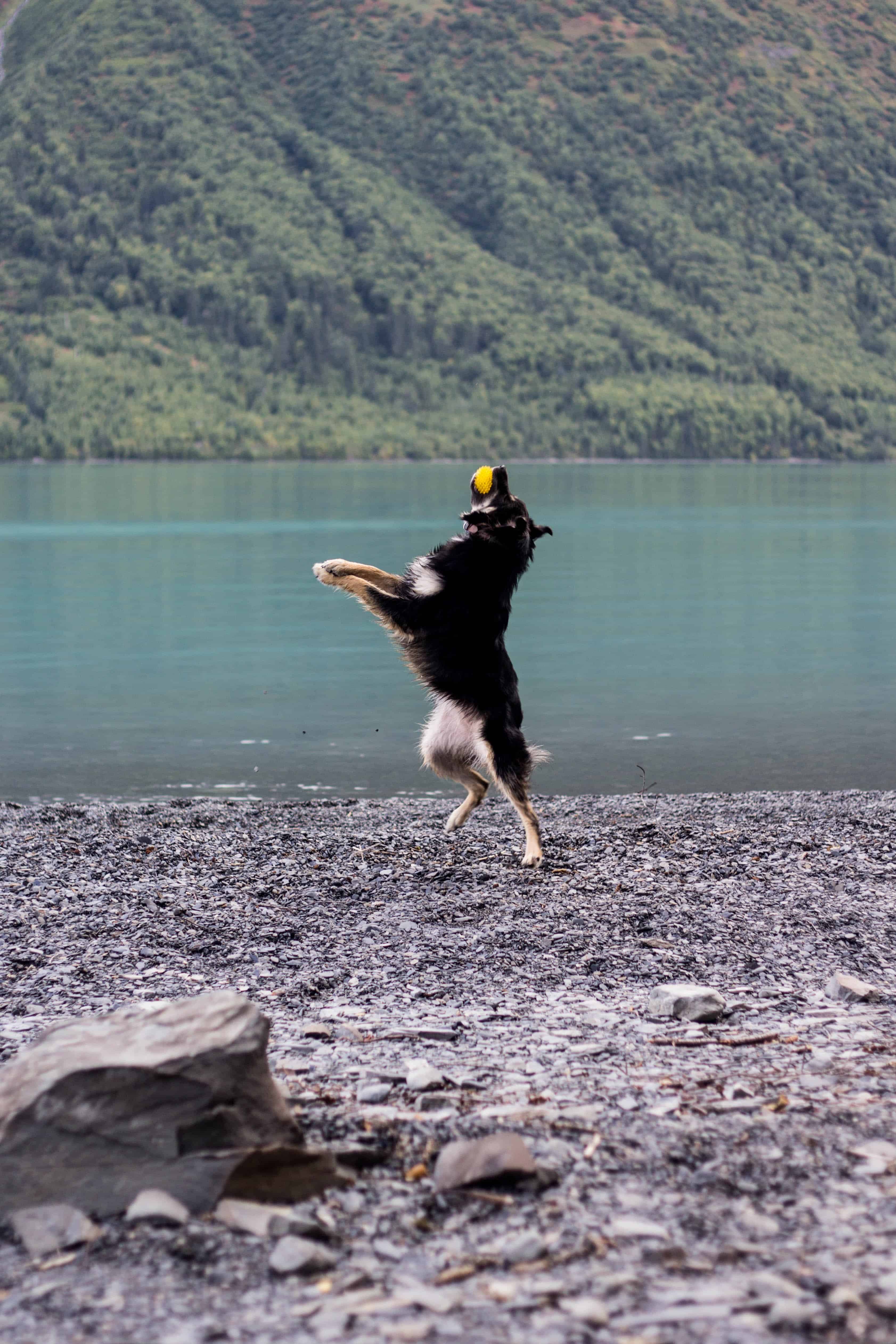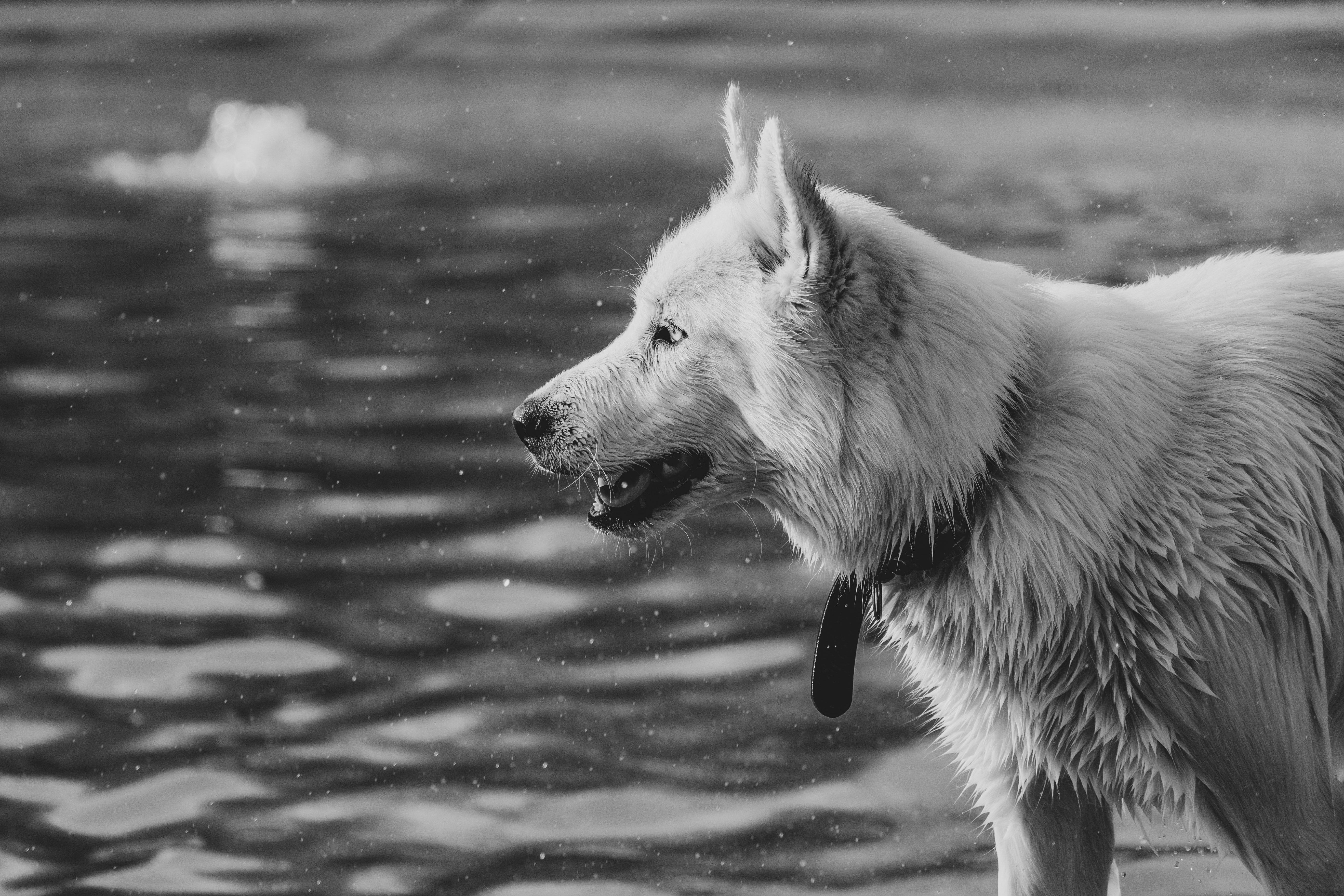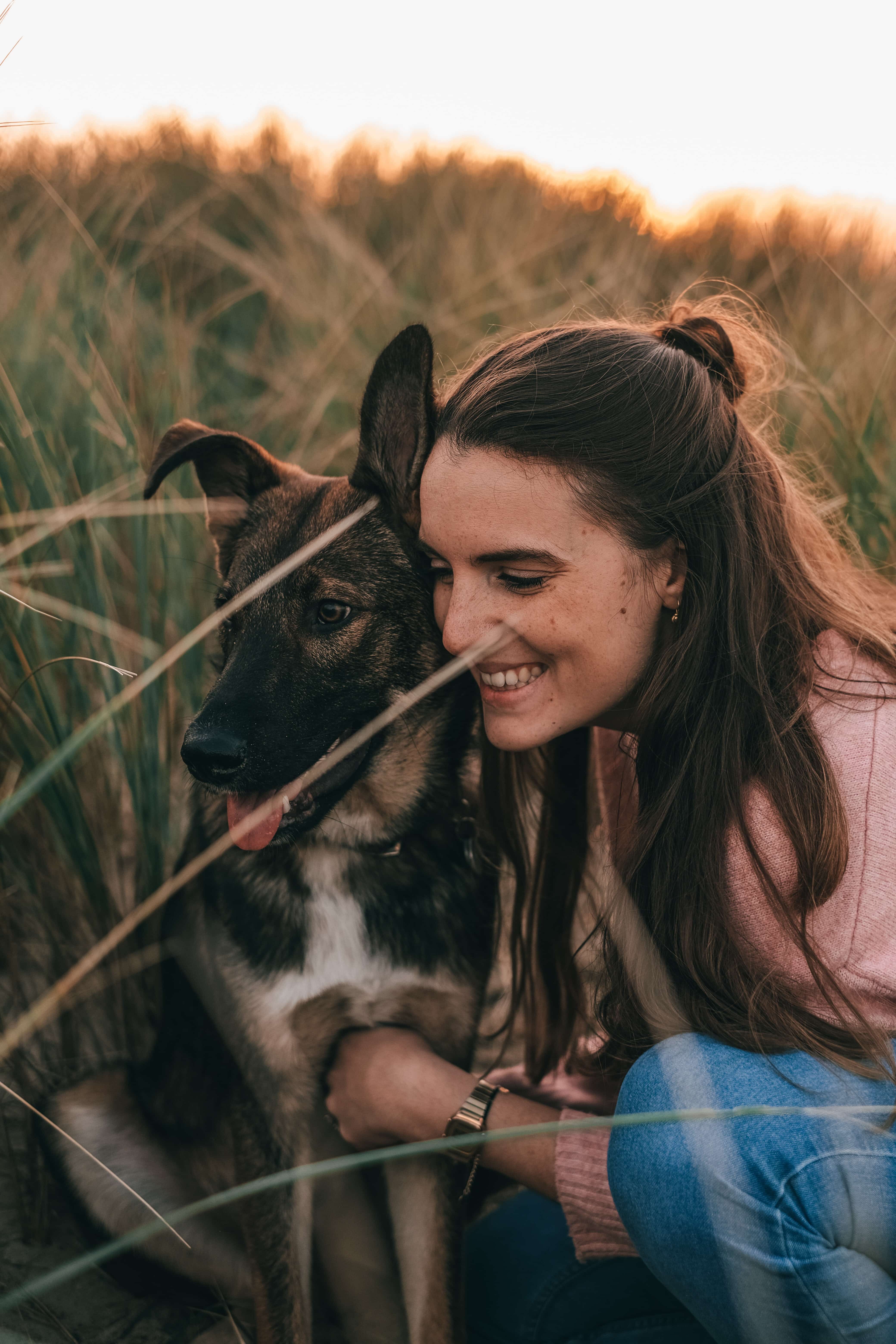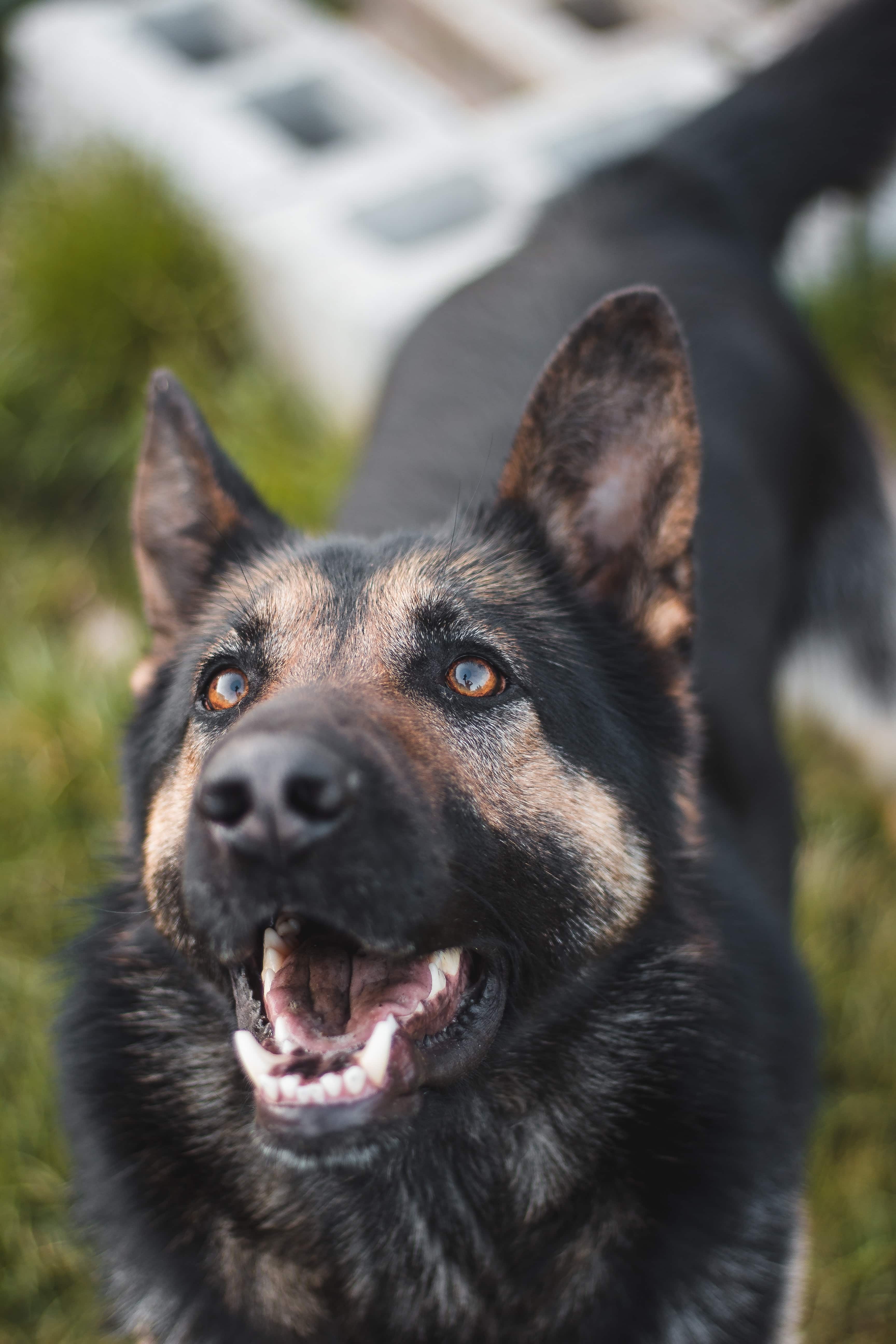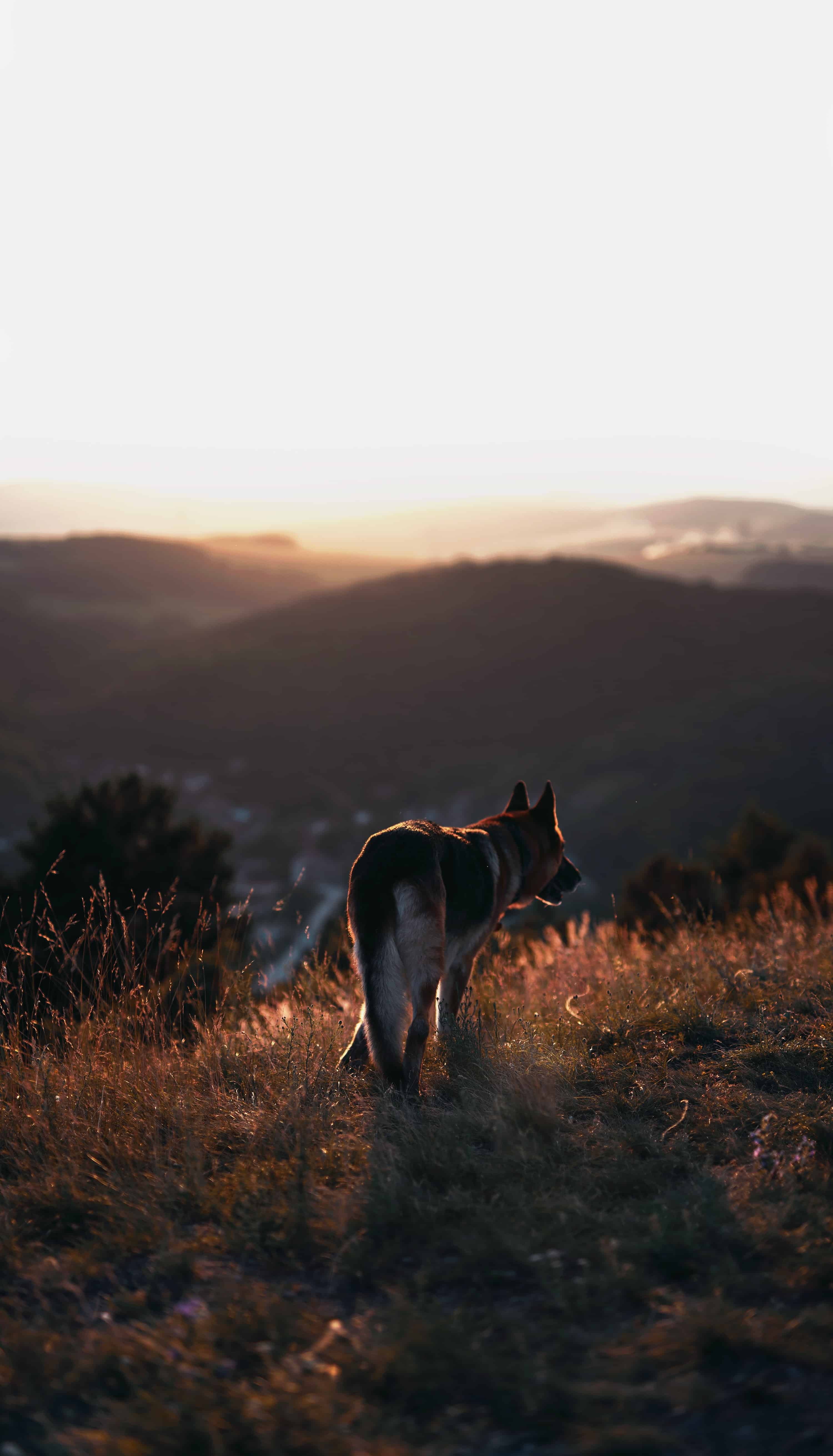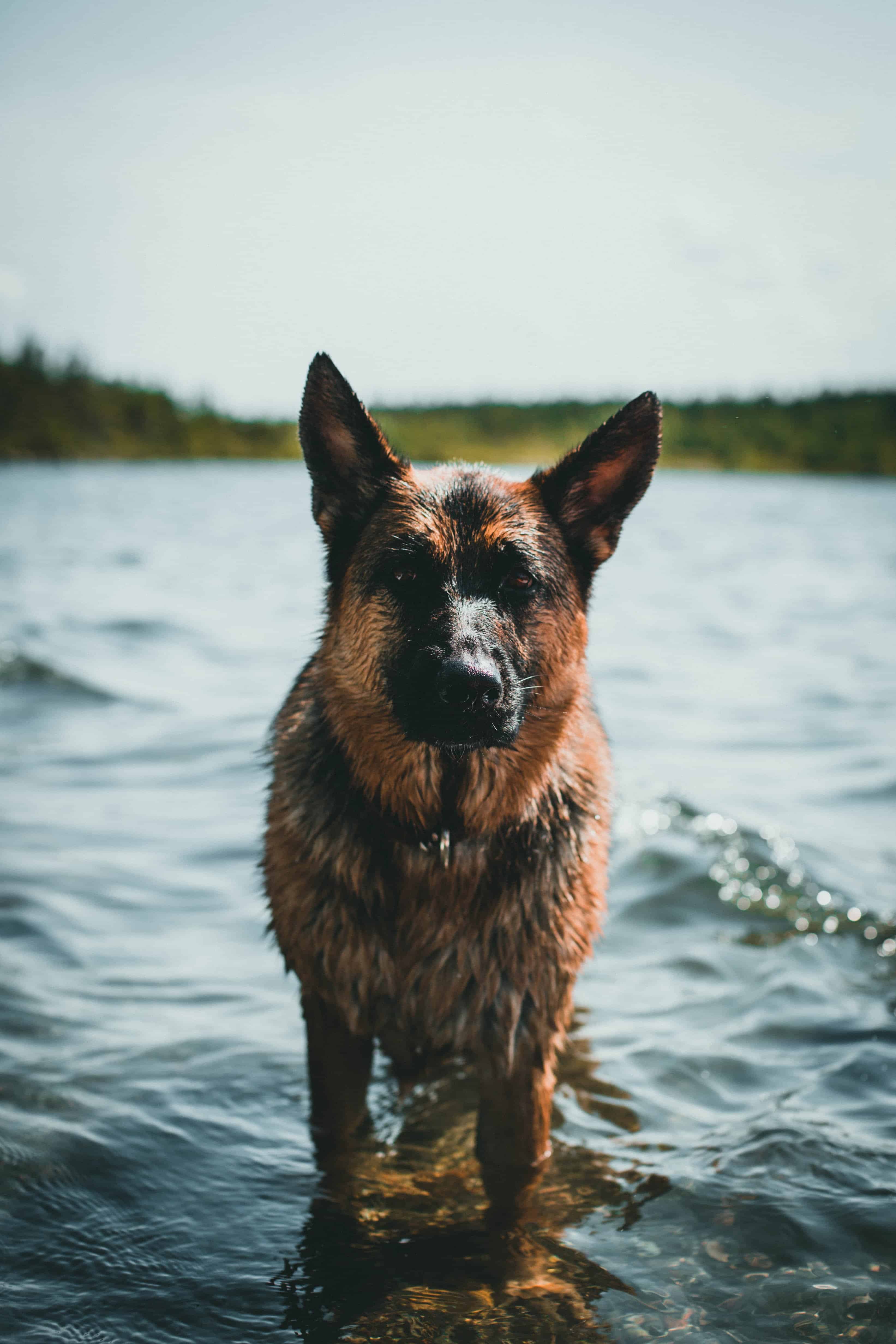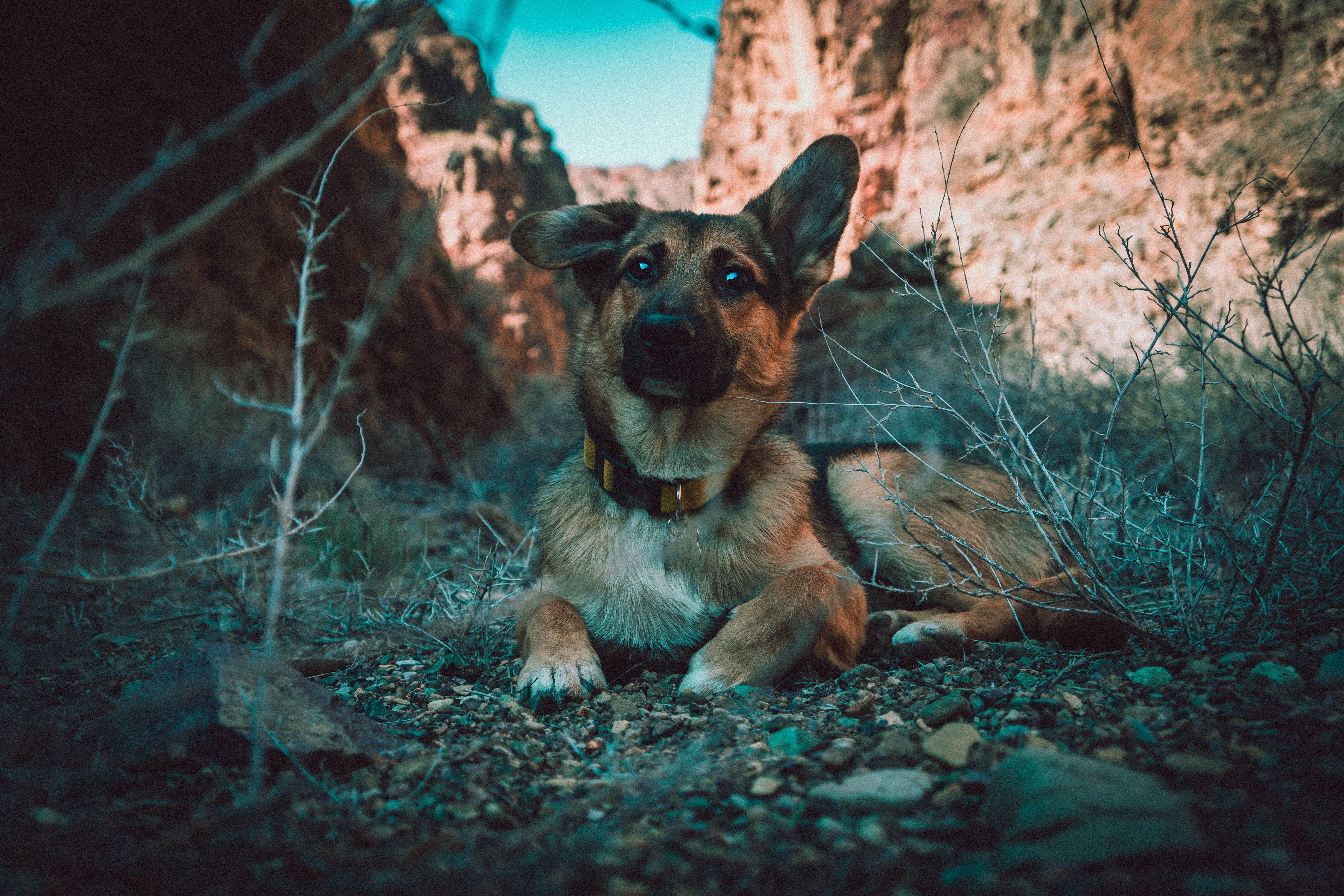
German Shepherds, which were originally raised to herd livestock all day, are made for action. This means they have a huge amount of energy that they will need to expend through regular activity.
Expect difficulty if you leave them alone for extended periods of time without exercising them.
Boredom and inactivity result in behavioral issues like chewing, digging, and barking.
The German Shepherd needs both physical and mental exercise (jogging, romping at the dog park) (training exercises like agility or obedience competitions).
German Shepherds, like many herding breeds, bark. Barking isn't always a bad thing, although it might be if the dog is restless.
The "Quiet" command should be included in every German Shepherd's obedience training.
German Shepherds like chewing and have strong jaws that can demolish most objects. If they chew on the inappropriate object, they might injure their teeth, ingest something poisonous, or even choke.
Give your dog safe chew toys and bones so they may occupy themselves while you're not playing with them.
Health concerns
Many prevalent German Shepherd diseases are the result of inbreeding practiced early in the breed's development. Hip and elbow dysplasia is one such prevalent illness that can cause discomfort and arthritis (is a word that is frequently used to refer to any joint condition.
Common symptoms include joint pain and stiffness. Other symptoms include redness, warmth, swelling, and a reduction in the range of motion of the afflicted joints. In some kinds of arthritis, other organs are also impacted )in the dog later in life.
Despite the limited sample size, research done by the University of Zurich discovered that 45 percent of police working dogs had degenerative spinal stenosis
Hip dysplasia affects 19.1 percent of German Shepherds, according to the Orthopedic Foundation for Animals.
There are, however, techniques to help avoid hip dysplasia, such as purchasing a puppy from a reputable breeder, feeding a balanced diet, and restricting bouncing or rough play.
Due to the hyperactivity of its cerumen-producing glands, German Shepherds have a low incidence of ear infections.
According to a recent UK survey, the median life expectancy of German Shepherds is 10.95 years, which is typical for a dog of their size.
Musculoskeletal illnesses are severe diseases that are frequently linked to genetics, malnutrition, and stressful situations. Some breeds, like the German shepherd, are prone to a number of bone problems, such as canine hip dysplasia, Cauda equina syndrome, and osteoarthritis.
These diseases can be caused by poor breeding or by excessive exercise and a bad diet.
Hip dysplasia -in dogs is an irregular development of the hip bone that, in its more extreme condition, can ultimately cause lameness and joint arthritis. It is a polygenic (genetic) characteristic that is influenced by environmental variables. It is frequent in many dog breeds, especially bigger breeds, and is the most frequent single cause of hip arthritis.
Symptoms: lethargy,difficulty moving,back legs lameness,loss of muscle in the thighs,unusual jumps (like bunny jumps) stiffness, and pain
Elbow dysplasia- is a disorder characterized by several developmental anomalies of the dog's elbow joint, especially the formation of cartilage or the tissues around it. These anomalies, referred to as "primary lesions," cause osteoarthritic processes. Elbow dysplasia is a prevalent problem in some dog breeds.
Symptoms:limping and stiffness around the elbow area,the dog doesn't want to go on walks or play anymore,front paws pointing outwards or elbows are at a strange angle,swollen elbows
Arthritis
Symptoms-difficulty getting up or down, walking stiffly, lameness in one or more legs, reluctance to go up/down the stairs, stiff, swollen, or sore joints, the dog doesn't like to be touched on specific parts of the body, loss of physical resistance ,unexpected aggression towards strangers or animals
Degenerative spinal stenosis
Symptoms-difficulty getting out of bed after sitting or laying down, they don't want to go up or down the stairs, back discomfort and weakness, incontinence, either urinary or fecal, back paw knuckling and dragging, the capacity to wag or lift the tail is problematic.
Degenerative myelopathy-a neurological condition, appears often in the breed, implying that the breed is prone to it. A low-cost DNA saliva test is now available to screen for degenerative myelopathy. The test looks for a mutant gene seen in dogs with degenerative myelopathy. Tiny research in the United Kingdom found that 16% of young asymptomatic German Shepherds were homozygous for the gene, with the remaining 38% carriers. With the availability of a test, the illness can be erased from breeds with a high prevalence.
Symptoms
Initial Stages-progression of hind limb weakness, nail deterioration, rising difficulty, stumbling, the knuckling of the toes (the paw is facing up), scuffing the back feet wearing of the rear paws' inner digits, muscle loss in the back legs, tremors in the back legs
Final Stages-early phases that are persistent, incontinence (both urinary and fecal), front leg weakness as a result of compensatory strain, Sores caused by pressure on bony prominences, the dog is unable to rise, muscle loss (atrophy), poor hygiene - dirty look (due to the lack of self-grooming), pneumonia depression, infection/sepsis, constipation, failure of an organ
Regardless of the illness, immediate veterinarian intervention is required :breathing difficulties ,seizures that are prolonged, vomiting/diarrhea that is uncontrollable, unexpected collapse ,extensive bleeding, either internal or external, crying/whining in agony
Von Willebrand disease-a common hereditary bleeding problem, and exocrine pancreatic insufficiency (EPI), a pancreatic degenerative disease, are more frequent in German Shepherds than in other breeds. This illness is thought to affect 1% of the German Shepherd population in the United Kingdom. Treatment is generally in the form of pancreatic supplements that are taken with food.
Symptoms: excessive, or prolonged bleeding following an accident, bleeding from the nose or gums, urine that is bloody, excessive or prolonged bleeding during or after surgery,blood in the feces, bruising of the skin
Cauda equina syndrome
Symptoms -The most frequent neurologic symptom of cauda equina syndrome is lower back discomfort. Reduced desire to jump up and climb stairs, low tail carriage or reduced tail wagging, inability to squat defecate, and whimpering/crying if the lower back is stroked are all signs of discomfort.
Dogs may have paralysis or lameness in one or both back legs in some circumstances due to compression of the nerve root that feeds the sciatic nerve as it leaves at the lumbosacral joint.
If nerve root compression produces substantial discomfort, dogs may keep up a leg after activity or scream out. Severe nerve root compression can cause fecal and urine incontinence, which is usually permanent.
Osteoarthritis
Symptoms-stiffness, lameness, limping, or trouble rising, lethargy, weight gain due to a lack of desire to run, jump, or play, irritability or behavioral changes,difficulty urinating or defecating, or having accidents in the house, loss of muscle mass in the legs and spine.
Osteoarthritis is one of the leading causes of musculoskeletal discomfort and disability in German shepherds.
Mechanical stress, oxidative damage, and inflammatory mediators all work together to cause slow degeneration of the joint's articular cartilage, resulting in decreased muscle mass, discomfort, and motility.
Canine hip dysplasia (CHD) -is an orthopedic disorder caused by improper development of the hip joint and surrounding tissue, resulting in hip joint instability and partial dislocation, discomfort, inflammation, lameness, and potentially osteoarthritis of the joint. German shepherds are genetically prone to CHD, with the frequency estimated to be around 35% of veterinary cases connected with the illness by the University of Veterinary Medicine in Germany.
Symptoms: reduced activity, reduced range of motion, difficulty or fear rising, jumping, sprinting, or stair climbing, lameness in the tail, gait swaying, "rabbit jumping" During movement, there is grating in the joint, muscle mass loss in the thighs, augmentation of the shoulder muscles as a result of compensating for the back legs, stiffness or limping caused by pain
- They require a lot of vitamins and a healthy well-balanced diet to ensure their proper development:
Calcium- to prevent Canine Hip Dysplasia,
Omega 3 fatty acids- for the prevention of cartilage catabolism (decreasing the symptoms of osteoarthritis),
Vitamin A and D- for bone development and maintenance.
Reference
https://en.wikipedia.org/wiki/German_Shepherd
https://dogtime.com/dog-breeds/german-shepherd-dog
https://en.wikipedia.org/wiki/Stanley_Coren
https://en.wikipedia.org/wiki/Arthritis
https://vcahospitals.com/know-your-pet/arthritis-in-dogs
https://www.thesprucepets.com/spinal-stenosis-in-dogs-4788325
https://www.pethealthnetwork.com/dog-health/dog-diseases-conditions-a-z/von-willebrands-disease-dogs
https://www.vscvets.com/surgery/neurology-conditions/cauda-equina-syndrome-ces
https://www.akc.org/expert-advice/health/osteoarthritis-signs-treatment/
https://www.akc.org/expert-advice/health/hip-dysplasia-in-dogs/
https://www.petmd.com/blogs/fullyvetted/2012/june/degenerative_myelopathy_in_dogs-25037


